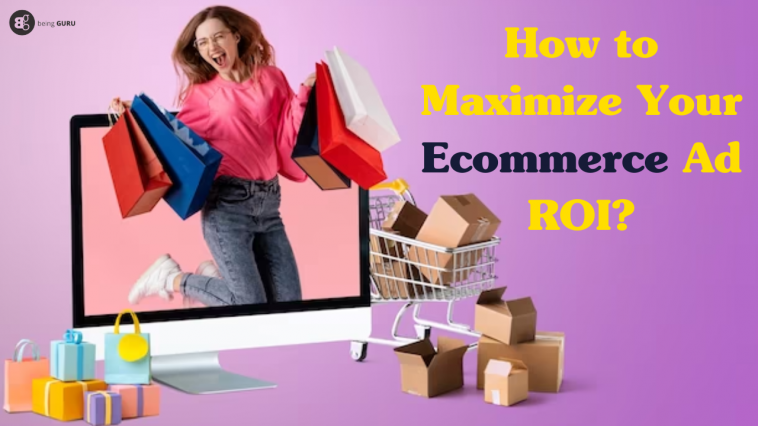Optimizing your ad spend and budget is essential to maintaining a good return on investment (ROI) in the fast-paced world of e-commerce. Making every marketing dollar count is crucial, given how fiercely competitive the market is.
In this in-depth guide, we’ll examine the ideas and techniques you should use to make your e-commerce advertising campaigns as effective as possible.
You may also like: How to start an E-Commerce Business in Pakistan in 2023?
1. Invest in upper-funnel tactics
Investing in upper-funnel tactics is a strategy that focuses on building brand awareness and generating interest among a broad audience. Upper-funnel tactics are typically used in the early stages of the customer journey to attract potential customers and create a foundation for future marketing efforts.
Here are some key considerations when it comes to investing in upper-funnel tactics:
- Content Marketing
- Social Media Advertising
- Display Advertising
- Search Engine Optimization (SEO)
- Influencer Marketing
- Email Marketing
- Public Relations (PR)
- Event Marketing
- Content Syndication
- Brand Partnerships
- Measurement and Analytics
You may also like: 6 E-commerce Growth Tactics You Can Use Today
2. Run on a variety of campaign types
It’s important to refrain from being overly swayed by the latest offerings from Google. Just as you diversify your investments in a 401K for stability, diversifying your campaign types is crucial for a well-rounded digital marketing strategy.
While there might be claims that specific campaigns can replace multiple campaign types and work seamlessly alongside keyword campaigns, such as Performance Max and Shopping, it’s advisable to conduct your tests.
Google introduces new campaigns gradually, and advertisers should follow suit by adopting these new campaign types in a phased manner.
3. Develop a targeted audience strategy
Craft a targeted audience strategy aligned with your business goals. Segment your audience into new and returning customers to boost performance. This approach allows for efficient budget allocation, directing resources to high-performing areas.
When using automated bid strategies, set separate targets for these segments based on their distinct performance characteristics. For example, you can optimize for a higher Return on Ad Spend (ROAS) with returning customers and a lower ROAS with new customers, maximizing your advertising effectiveness.
4. Keep your segments in place
Maintaining some level of segmentation is valuable, even when Google suggests consolidating campaigns (to a certain extent). For instance, if you’re bidding on more expensive keywords related to other brands, keeping them separate from non-brand terms is essential to prevent budget depletion.
Find a segmentation approach that suits your needs based on profit margin, product type, or price. This strategy enables quicker analysis and the ability to allocate resources strategically, mainly when working with limited budgets.
Our successful approach involves segmenting Shopping and Performance Max campaigns by product type, which aligns with the client’s profitability. This allows us to allocate a budget that delivers the best return and optimizes based on varying ROAS targets tied to product margins.
5. Lean in Automation
This might seem counterintuitive, but embracing automation is crucial. While marketers often desire control, automation is an integral and increasingly prevalent part of our landscape. Embrace automation and learn to harness its potential now, so you’re already ahead of the game when it becomes an industry norm.
If you still need to adopt bid strategies, it’s time to start. An observed benefit is that, in all tests, automated bid strategies consistently outperform Enhanced CPC, which is scheduled to phase out from Shopping campaigns soon.
Consider exploring Performance Max, mainly if your audience strategy targets new customers. On average, Performance Max yields 50% more new customers than traditional Shopping campaigns.
6. Consider data-driven attribution
If you haven’t already, exploring data-driven attribution (DDA) is essential. Changing your attribution settings is a daunting shift, akin to leaving your ads manager role to pursue a stand-up comedy career.
However, much like automation and Google’s ongoing evolution, it’s just a matter of time before Google fully embraces DDA or a similar model, as evidenced by the discontinuation of first-click, linear, time decay, and position-based attribution methods.
DDA is particularly valuable for high-consideration purchases where users extensively research before buying. It gives advertisers a more comprehensive understanding of how their top-of-funnel efforts impact conversions, helping them make more informed marketing decisions.
7. Get specific with your creative
Success in campaigns isn’t just about setup; creative matters. Consolidated campaigns can make creative optimization challenging, but specific creative remains crucial. While personalized ad content is more complex, it’s still achievable.
Thematic ad groups, Responsive Search Ads, and diverse product integration can help. Let Google’s AI serve the most relevant ad elements. In display, focus on seasonally updating creatives with available best-selling products showcased in lifestyle images.
Avoid disappointing customers with out-of-stock items in ads. Efficiency is critical; eliminate unproductive elements to maximize budget allocation and overall success.
You may also like: 2023’s Top 6 E-commerce Trends
8. Cut unnecessary expenses whenever possible
Trimming unnecessary expenses is essential during economic uncertainty and tighter marketing budgets. Identify areas that underperform and allocate resources more effectively to those yielding more robust results.
Increased sales and success with lower-cost products as consumers seek budget-conscious shopping options. Leveraging discounted products for new customer acquisition has been particularly effective; enticing them with discounts can lead to future full-priced purchases.
Additionally, it’s crucial to align your targets with business objectives by considering metrics like lifetime value (LTV) and cost of goods (COGs) and ensuring that return on ad spend (ROAS) or customer acquisition cost (CAC) targets remain profitable.
Sum Up
It’s crucial to strike a harmonious balance between a structure that aligns with your business objectives and adhering to Google’s recommended best practices. While this may involve some experimentation, applying the above insights and recommendations can enhance your efficiency and foster business growth.






